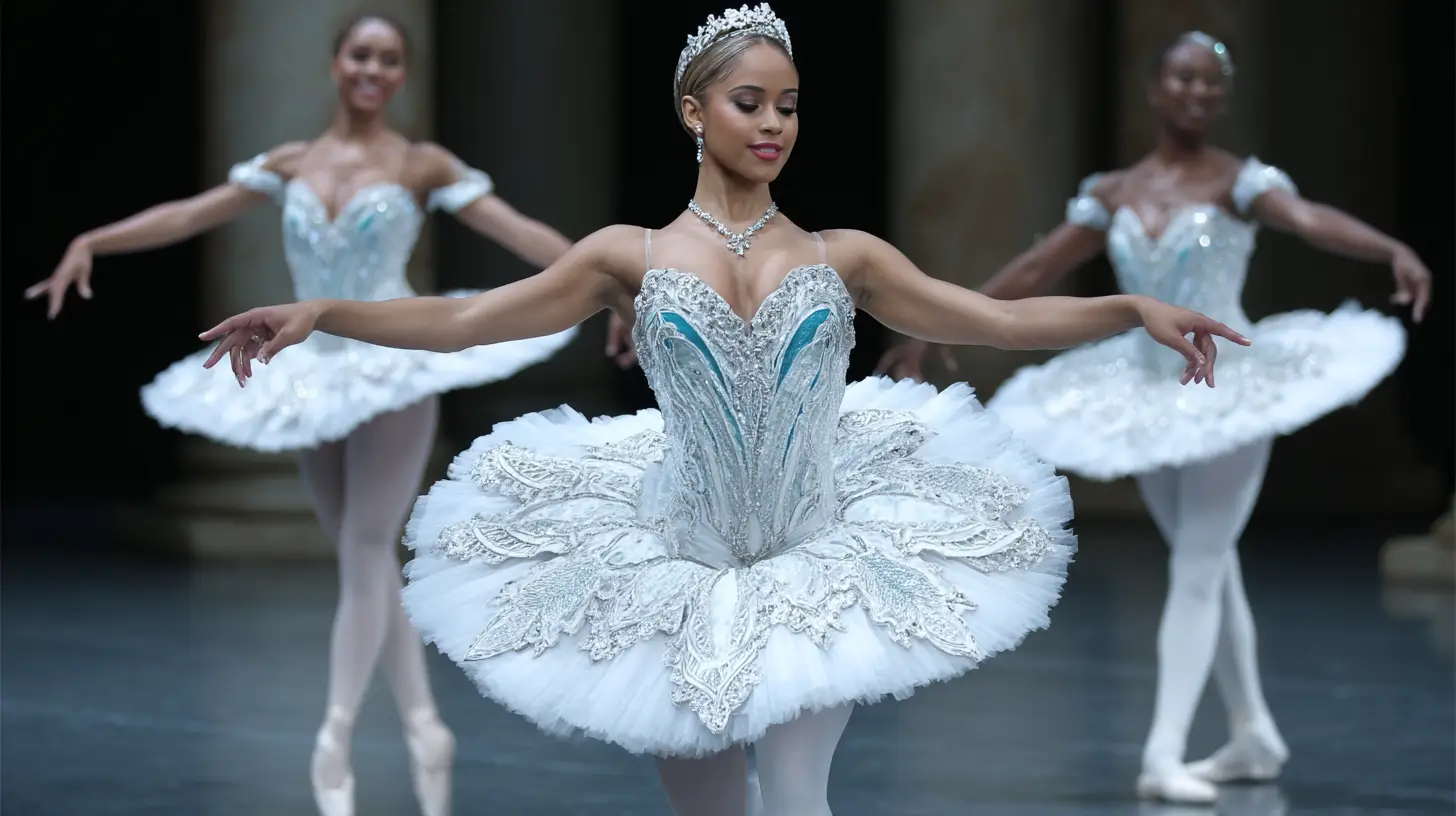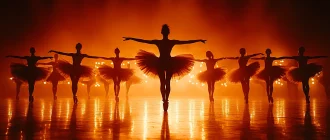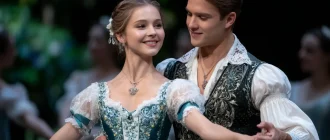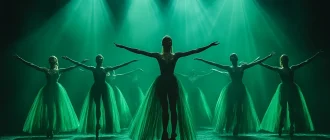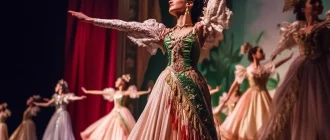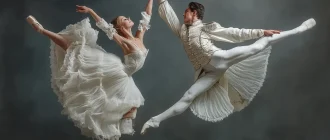Judges in ballet competitions look for variations that display exceptional technique, emotional expression, and unique artistry. In this article, we’ll reveal which ballet variations judges like consistently, helping you make an informed choice for your next performance. Additionally, we will explore how creativity meets commerce in ballet competitions, emphasizing the blend of artistic expression and practical strategies.
Key Takeaways
- Classic ballet variations like Odette’s from Swan Lake and Kitri’s from Don Quixote are essential for showcasing technical mastery and emotional storytelling, making them favorites among judges.
- Choosing variations that align with your strengths while incorporating unique interpretations can help you stand out in competitions, capturing the judges’ attention.
- Focused preparation through intensive training, regular rehearsal, and constructive feedback is key to enhancing performance skills and building confidence for successful ballet competitions.
Art de Podcast
Ballet variations are crucial to classical ballet, showcasing a dancer’s technical skills, artistic expression, and musicality. These variations can be found in various iconic ballets, such as Swan Lake, Sleeping Beauty, and Don Quixote, and are often performed in ballet competitions to highlight a dancer’s prowess.
Mastering ballet variations requires dancers to possess strong technical skills, including intricate footwork, impeccable balance on pointe, and the ability to convey deep emotion and tell a compelling story through their movements. By studying and performing these variations, students and dancers can significantly enhance their technique, artistry, and overall performance quality, making them stand out in the competitive world of ballet.
Classic Choices: Timeless Ballet Variations
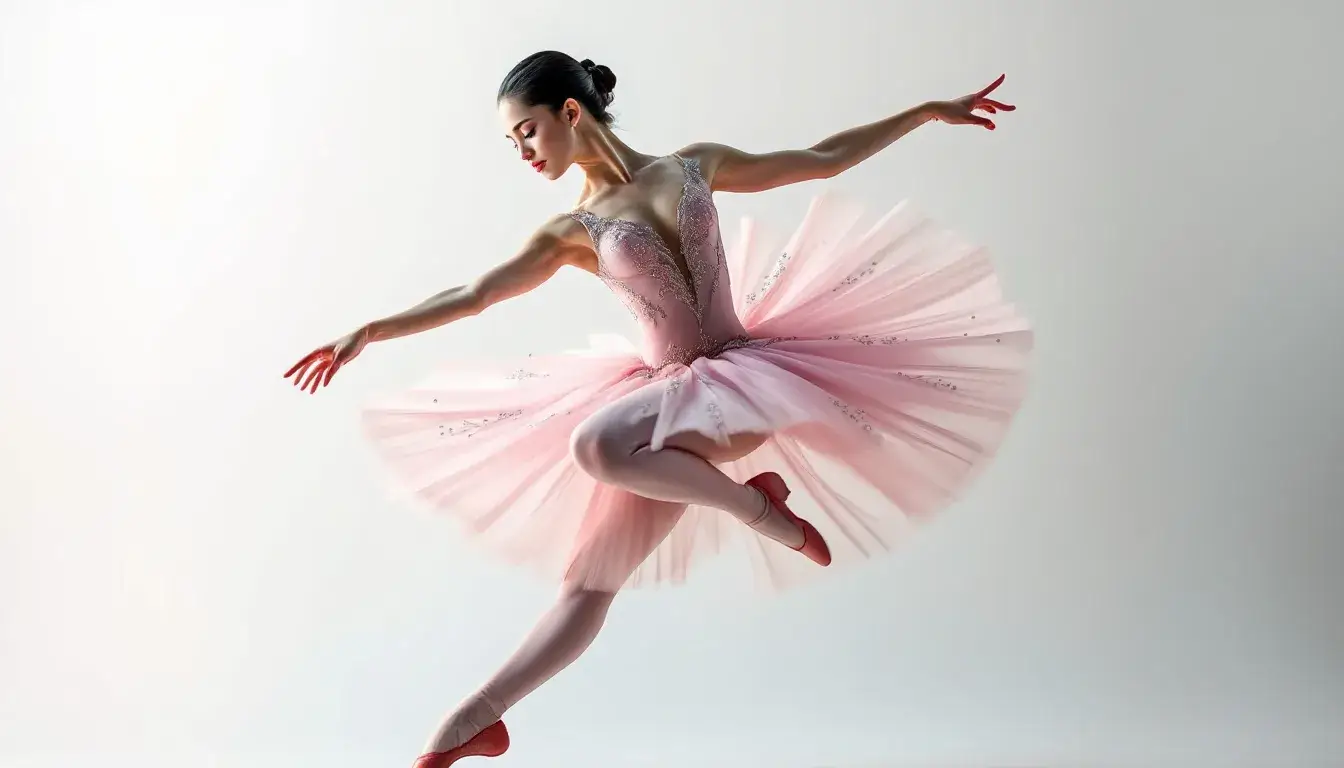
Classic ballet variations are the gold standard in competitions, beloved for their elegance, technical demands, and rich storytelling. These pieces have stood the test of time and remain favorites among judges and audiences, showcasing a notable difference in their technical needs and elegance. Prestigious competitions like ‘Prix de Lausanne’ evaluate these classic variations for their technical precision and emotional depth.
The choice of a classical variation plays a pivotal role in competitions, as these pieces are benchmarks of technical precision and emotional depth in the music repertoire.
Swan Lake’s Odette Variation
Odette’s variation from Swan Lake is a masterpiece of classical ballet. It features delicate movements highlighting a dancer’s grace, elegance, and technical control. This variation requires exceptional technical skills, including strong pointe work, and the ability to convey deep emotion through facial expressions, making it a standout choice for judges.
Technical mastery paired with an emotional story guarantees a memorable performance that captivates judges and audiences, creating a personal connection.
Sleeping Beauty’s Aurora Variation
Aurora’s variation from Sleeping Beauty is renowned for its intricate footwork and demanding pointe work. This variation includes challenging sequences that showcase a dancer’s precision and agility. Dancers must master difficult balances and turns on pointe to deliver a captivating performance.
Aurora’s variation, technical demands, and artistry are highly appealing to judges and a staple in competitions.
Don Quixote’s Kitri Variation
Kitri’s variation from Don Quixote is characterized by its vibrant energy and showcases a dancer’s ability to perform with flair and dynamic expression. This variation is celebrated for its lively character and demanding choreography, emphasizing rapid footwork and dynamic energy that demonstrate a dancer’s dancing versatility.
Kitri’s variation, with its high energy and vibrant choreography, is a favorite among competition judges. The YAGP guidelines allow dancers to showcase their strengths in Kitri’s variation, emphasizing the importance of representation and access to choreographers. You can also subscribe to the daily newsletter for more insight.
Technical Mastery: Variations Showcasing Skill
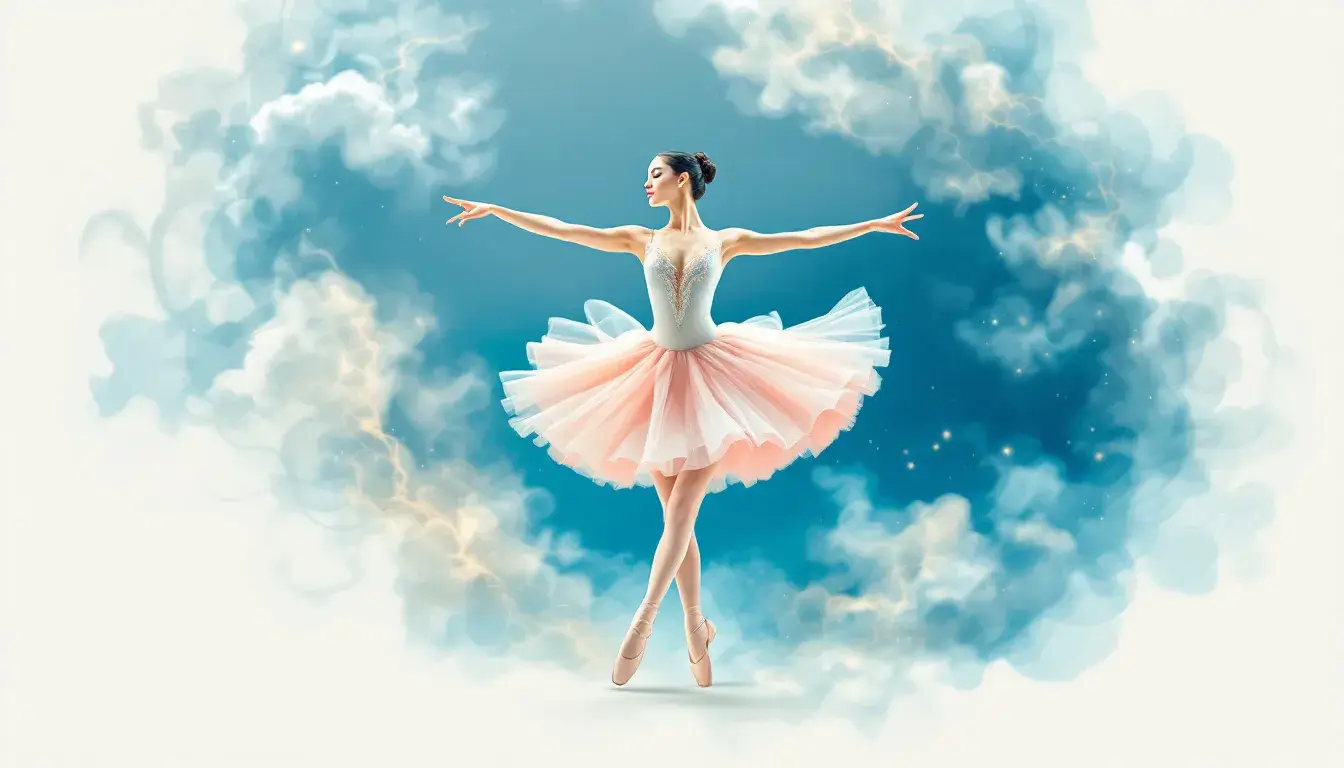
Ballet variations are essential for demonstrating a dancer’s technical skill and artistic expression. Judges closely evaluate these pieces for precision, control, and the ability to execute complex movements gracefully, as well as how well a dancer adapts their performance in a dance edit. Classical ballet variations, such as Aurora’s from Sleeping Beauty and Raymonda’s Act III, require elegance and strength, emphasizing strong pointe work, which makes them favorites in competitions.
Selecting variations that highlight your natural strengths, such as turning or jumping skills, can greatly enhance your performance.
La Bayadère’s Nikiya Variation
Nikiya’s variation in La Bayadère is renowned for its demanding balance and graceful movements that require exceptional body control. This variation emphasizes the need for refined balance and flawless pointe technique, challenging dancers to perform with strength and elegance.
Nikiya’s variation often mesmerizes judges with its elegance and technical demands, making it a perfect solo performance in competition.
Le Corsaire’s Medora Variation
Medora’s variation from Le Corsaire is characterized by demanding jumps and turns, testing a dancer’s agility and technical prowess. This variation includes complex aerial movements and rapid turns, showcasing a dancer’s jumping technique and stamina.
Challenging jumps in this variation emphasize agility and control, making it a standout in competitions.
La Sylphide’s Sylph Variation
The Sylph variation from La Sylphide showcases a dancer’s ability to achieve a light and ethereal appearance, which is essential for conveying the character’s spirit. This variation emphasizes a dancer’s ability to convey lightness and grace, necessitating precise movements and fluidity.
The Sylph variation’s delicate, airy movements highlight a dancer’s lightness and ethereal presence, making it a favorite in lilac fairy competitions.
Emotional Expression: Connecting with the Audience
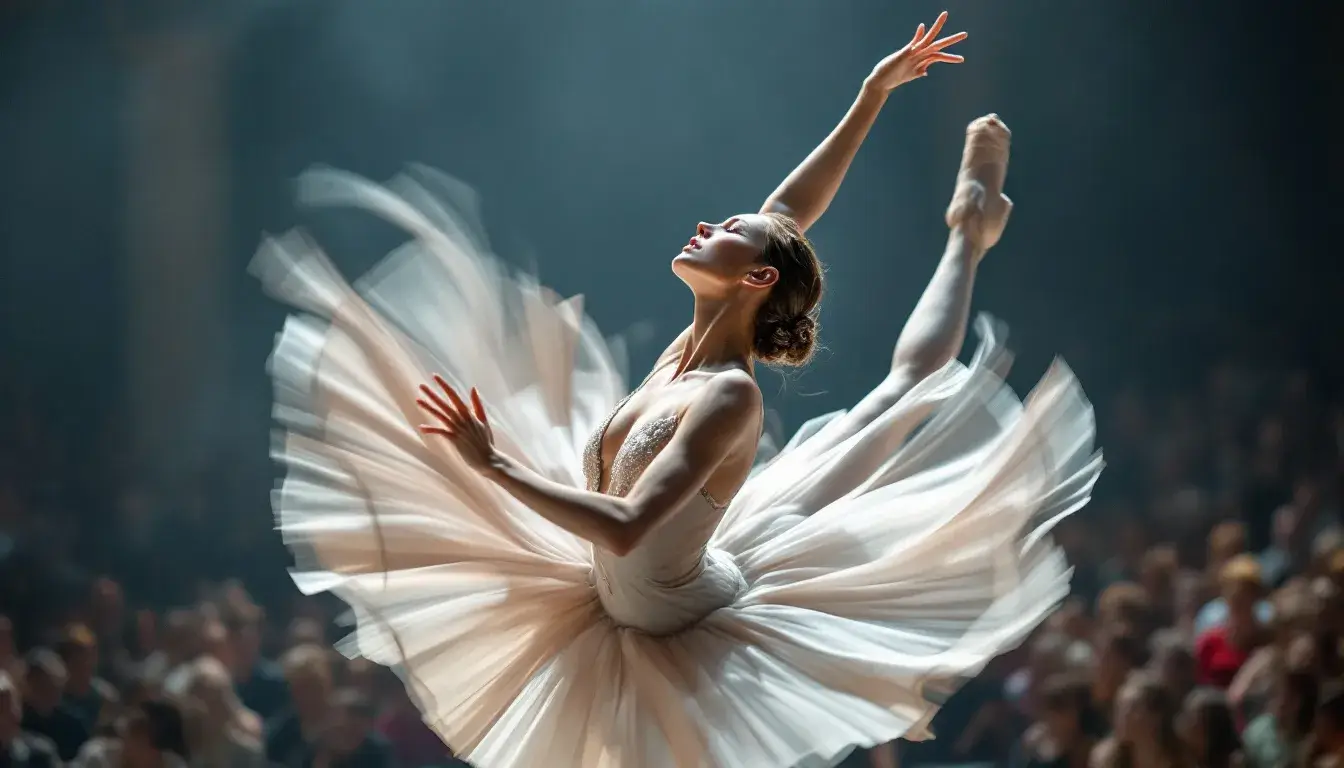
Emotional storytelling is crucial for resonating with judges and audiences in ballet variations. Solos are crucial performances that showcase a dancer’s ability to connect emotionally with the audience. Performances that evoke a strong emotional connection through facial expressions tend to leave a lasting impression on judges. Variations like Odette’s from Swan Lake and Swanhilda’s from Coppélia are celebrated for their expressive movements and ability to connect with the audience, creating a strong personal connection.
Judges favor performances that emphasize character and emotional depth.
Giselle’s Act I Variation
Giselle’s Act I variation is notable for its blend of dramatic storytelling and emotional depth, significantly influencing judges during performances. This Act II variation showcases the character’s vulnerability and innocence, resonating strongly with viewers.
Giselle’s Act I variation captivates judges with its emotional depth, highlighting both vulnerability and strength, making it a powerful choice for competition, often compared to the Lilac Fairy’s enchanting presence.
Coppélia’s Swanhilda Variation
Swanhilda’s variation from Coppélia is celebrated for its charm and playfulness, allowing dancers to showcase a whimsical character. The expressiveness in Swanhilda’s performance invites the audience into her lively world, emphasizing emotional storytelling. Judges favor variations that highlight character-driven performances, as they create a strong connection with the audience, setting those performances apart from others, including other dancers.
To impress, dancers should focus on capturing Swanhilda’s playful dance spirit in their training and dancing performances.
Romeo and Juliet’s Variation
Juliet’s variation in Romeo and Juliet is recognized for its expressive movements and passionate portrayal, making it an emotional highlight that judges often favor in competitions. This variation features lyrical movements that express profound emotions across all ages, making it a compelling choice for competitive performances.
Juliet’s variation, with its passionate and lyrical movements, creates an emotionally charged performance that resonates with judges.
Unique Selections: Standing Out with Uncommon Variations
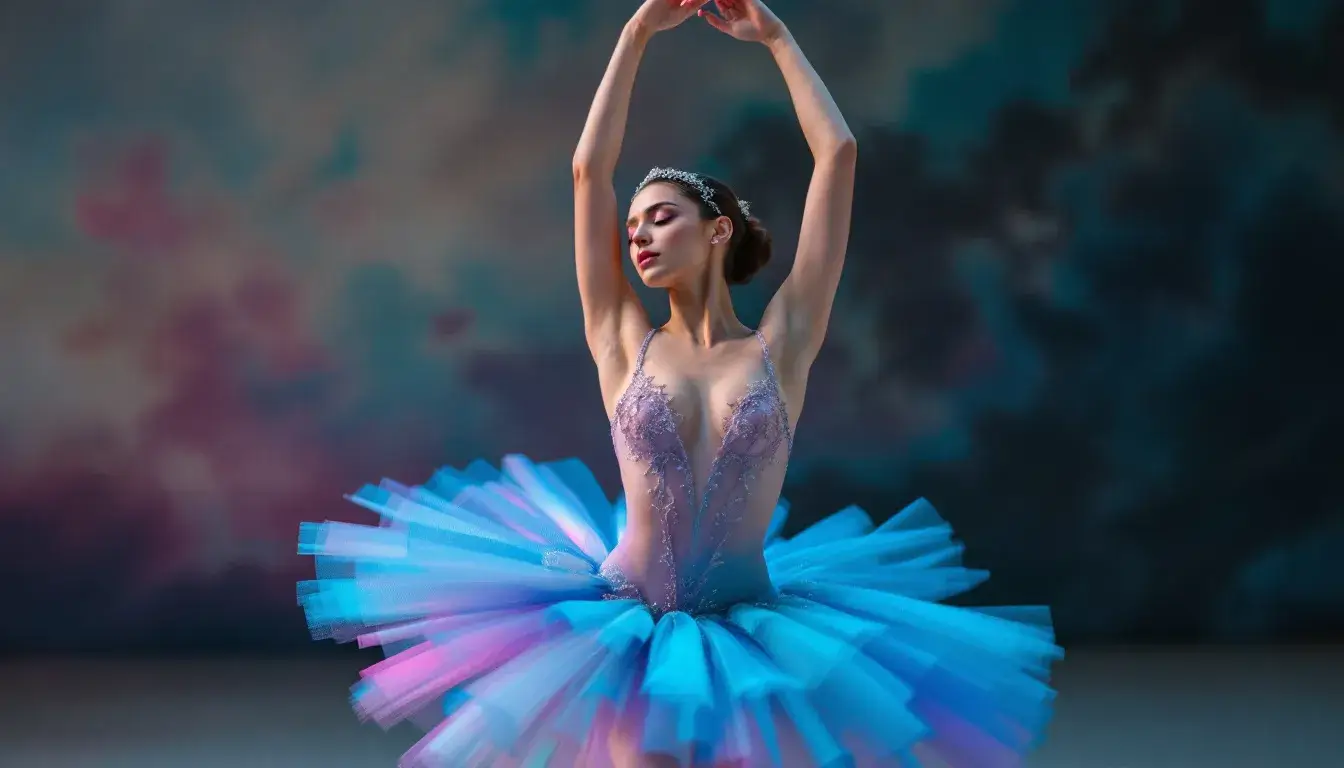
Choosing less common variations can help dancers distinguish themselves in competitions. Judges often value performances that showcase the dancer’s unique interpretation rather than merely following trends. Variations like Swanhilda’s from Coppélia and Columbine’s from Harlequinade are celebrated for their lively choreography and playful gestures, effectively highlighting the spirited personalities of their characters.
Unique selections help dancers stand out and captivate judges, showcasing a solo dancer’s individuality in a dance edit and setting them apart from other dancers and choreographers. Most people come to these competitions with newly choreographed contemporary work, posing challenges for dancers with limited resources for creating effective material.
Paquita’s Principal Variation
Paquita’s Principal Variation is recognized for its demanding technical sequence and unique style, making it a noteworthy competition choice. This variation features hops on pointe and rapid turns, showcasing an energetic and vibrant style, making it essential to stay updated with the best dance retailer news. Paquita’s variations’ technical challenges and unique artistry offer a refreshing choice for dancers aiming to stand out in competitions.
Harlequinade’s Columbine Variation
Columbine’s variation from Harlequinade is celebrated for its lively and spirited nature, which allows a dancer to express a fun and different aspect of artistry. The variation showcases playful charm and encourages the dancer to connect with the audience through spirited movements.
With its lively artistry and technical prowess, Columbine’s solo variation becomes a memorable choice that impresses judges.
Raymonda’s Act III Variation
Raymonda’s variation demands a regal and commanding presence, essential for captivating the audience. The striking regal quality of Raymonda’s performance often appeals to judges, as it exudes confidence and strength. Raymonda’s variation exudes grandiosity through intricate choreography and the dancer’s ability to embody nobility.
These attributes enhance the competition appeal of Raymonda’s Act III Variations, making it a favorite among judges.
Advanced Ballet Variations
As dancers progress in training, they often tackle more advanced ballet variations that demand higher skill and artistry. These variations are technically challenging and require a profound connection to the character and music, making them favorites among competitors.
The Nutcracker’s Sugar Plum Fairy Variation
The Sugar Plum Fairy Variation from The Nutcracker is a quintessential example of an advanced ballet variation. This piece is celebrated for its delicate yet demanding choreography, which features intricate footwork, precise pointe work, and graceful port de bras, often influenced by renowned figures such as John Meehan. The variation requires the dancer to exhibit technical precision and a regal, ethereal presence, captivating the audience and judges with its enchanting musicality and elegance.
The Flames of Paris’ Jeanne Variation
Jeanne’s variation from The Flames of Paris is known for its fiery energy and dynamic choreography. This variation is packed with powerful jumps, rapid turns, and expressive movements that showcase a dancer’s strength, agility, and dramatic flair. Performing Jeanne’s variation requires technical excellence and the ability to convey the character’s passionate spirit, making it a standout choice in competitions.
Choosing the Right Variation for You
Selecting the right ballet variation is essential for showcasing your strengths and growing as a dancer. Famous combinations of movements in variations, such as Odette’s from Swan Lake and Kitri’s from Don Quixote, are crucial for developing technique and artistry. Selecting certain variations that feel slightly beyond your current capabilities is advisable to foster growth.
Preparation involves focused training, regular practice, and a clear understanding of performance expectations. Seeking constructive criticism from experienced teachers and peers can significantly enhance your skills and adaptability.
Assessing Your Strengths
Evaluating your strengths is crucial when selecting a ballet variation. Working on two variations simultaneously can strike a balance between comfort and challenge, allowing you to grow as a dancer. Consider your age and experience; younger performers might benefit from simpler pieces that build confidence and foundational skills, and you can also join a newsletter for more resources.
Understanding your strengths enables you to select variations that highlight your abilities and help you excel in competitions.
Understanding Judge Preferences
Judges evaluate performances based on artistry, musicality, and technique. They also look for additional qualities such as freedom, expressiveness, and physical and emotional courage. While following trends is tempting, choosing variations that align with your strengths and style is essential.
Judges favor unique performances that showcase individuality and personal strengths, so focus on making your variation your own through thoughtful interpretation and preparation.
Balancing Trends and Individuality
Balancing trends and individuality is key to creating a memorable ballet performance. Avoid choosing variations solely based on popularity, as maintaining authenticity is crucial. Incorporating contemporary trends that align with your artistry and move the dance spirit can help create a distinctive performance.
Balancing trends and individuality will captivate judges and audiences, ensuring your performance stands out.
Preparing for Competitions
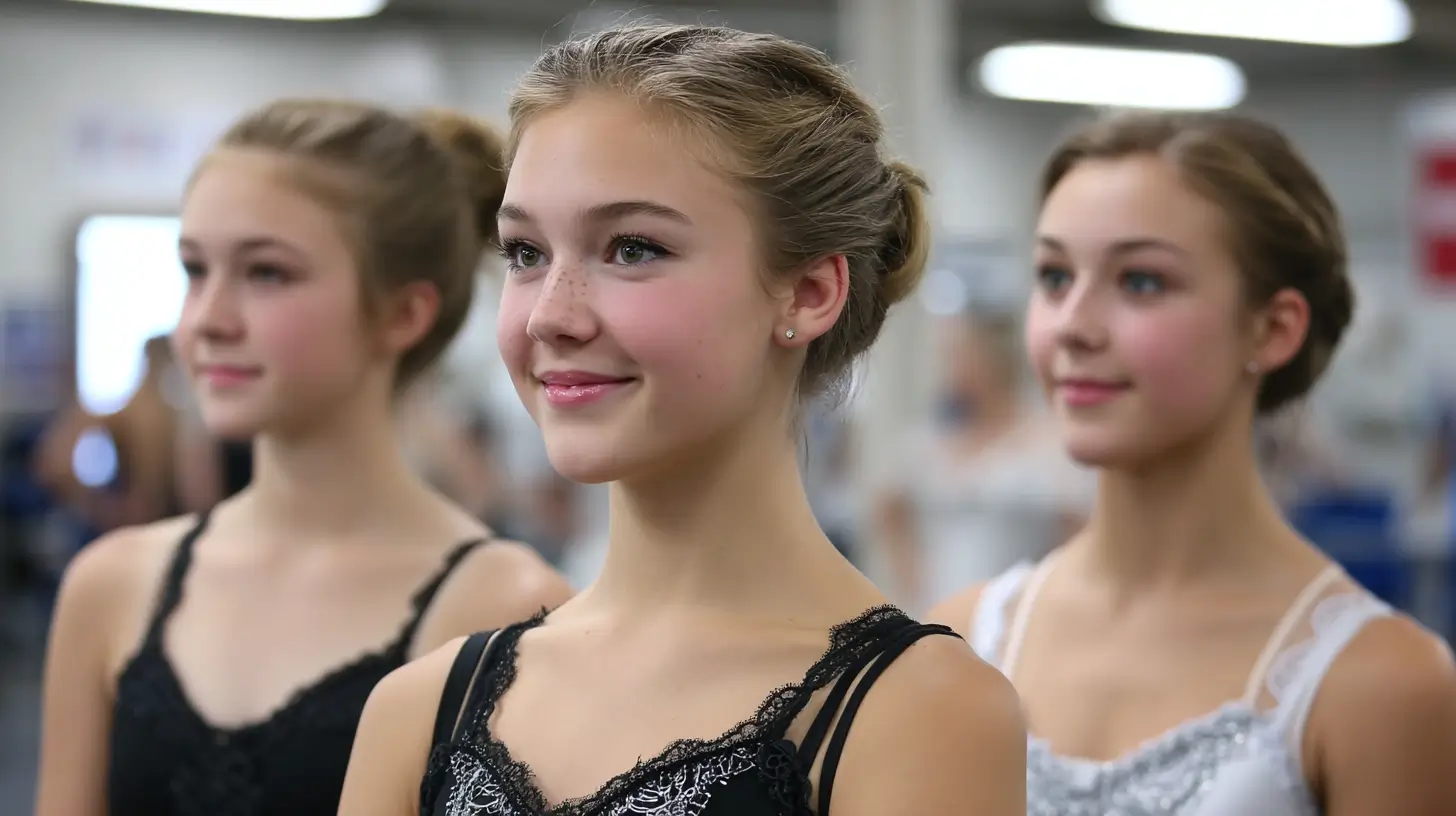
Preparing for ballet competitions involves focused training, regular practice, and seeking feedback. Consider enrolling in summer intensives and specialized training programs to refine your technique and performance skills. Thorough rehearsals of your variations will help you perfect your execution and build confidence on stage. Understanding judge expectations at major competitions like ‘USA IBC’ can help dancers prepare effectively while staying updated with the best dance retailer news.
Seeking feedback from teachers and peers allows you to continuously improve and adapt your performances as a student, ensuring you are competition-ready.
Intensive Training Programs
Summer intensives provide valuable opportunities for dancers to enhance their technique, artistry, and performance skills. These programs offer specialized coaching and mentorship, which can significantly improve your chances of competing by polishing your overall performance. Subscribe to our petite daily newsletter for more insights. Please join our mailing list for detailed updates and tips on intensive training programs and competition preparation.
Regular practice is essential for mastering your variations and building stage confidence at all stages of life. Seeking feedback from instructors and peers during these course programs helps identify areas for improvement and refine your skills.
Performance Practice
Thorough rehearsals refine technique and boost self-assurance for stage performances. Regularly rehearsing your variations improves your execution and instills the confidence needed for successful performances, thereby reducing the likelihood of mistakes.
Consistent practice enhances technical skill and self-assurance, ensuring you are well-prepared for competitions. Mastering your variations through dedicated practice will make your performance stand out.
Feedback and Improvement
Feedback from teachers and peers helps dancers identify areas for improvement and evolve their performances. Assessing your technical skills, artistic expression, and stage presence allows you to utilize feedback effectively.
Knowing what judges look for helps you adapt your techniques and artistry in response to feedback. Strive to incorporate current trends while maintaining your artistic identity, using feedback to guide your choices and enhance your performances.
Top 10 Judge‑Favored Competition Variations
| # | Variation (Ballet / Act) | Gender | Why judges keep scoring it high | Common pitfalls |
|---|---|---|---|---|
| 1 | Raymonda – Dream (Act I) | F | Pure Petipa classicism: crisp Hungarian‑flavored footwork, musical épaulement, room for big port‑de‑bras phrasing. A string of 2024–25 YAGP medalists won with it. YAGP | Rushing the polka‑based rhythms, floppy arabesque lines. |
| 2 | Cupid (Cuban version), Don Quixote – Vision Scene | F | A short, sparkling allegro that shows ballon, batterie, and upper‑body delicacy was cited by YAGP founder Larissa Saveliev as a judge‑pleaser. | Turning it into a trick‑fest—keep it light and cherubic. |
| 3 | Harlequinade – Columbine/Pierrette | F | Comedy + classical: crisp Italian pas, quick direction changes, clear mime. Judges love seeing character nuance beyond pure technique. | Losing timing in the ballottés; over‑acting the coy moments. |
| 4 | Awakening of Flora – Hebe Variation | F | Rarely over‑performed, so it feels fresh; long musical lines test control and musicality. Judges notice its stylistic polish. | Letting the slow tempi expose shaky pointe work. |
| 5 | La Esmeralda – Tambourine | F | Fiery allegro + prop management; it still brings the house down when danced with clean fouettés and sass, frequently on YAGP podiums. | Over‑amped tambourine tricks; sloppy finishing poses = lost points. |
| 6 | Princess Florine (Bluebird), Sleeping Beauty – Act III | F | Recent Bedells Bursary & YAGP winners used it to showcase musicality by combining buoyant pas de chats with lyrical ports-de-bras. | Tempo too quick (wings look heavy) or wrists too stiff—kills avian illusion. |
| 7 | Basilio, Don Quixote – Act III | M | Judges love its dare‑devil tours à la seconde, but it also demands épaulement finesse. U.S. 2025 Prix candidate Max Berg picked it for Lausanne. | Starting with double tours you can’t nail; weak Spanish port‑de‑bras. |
| 8 | Solor, La Bayadère – Act II | M | Textbook classical line + ballon; compulsory on Prix de Lausanne list, so panels are primed to score details. | Letting the adagio phrasing sag, footwork gets muddy in cabrioles. |
| 9 | Prince Désiré, Sleeping Beauty – Act III | M | Mixes noble adagio with pristine battery—ideal for showing versatility without flashiness. Constantly shortlisted on the Lausanne repertoire. | Flat demi‑plié between jumps; stiff court‑style arms. |
| 10 | Count Fabio, Satanella (Carnaval de Venise) | M | High‑voltage bravura (barrel jumps, pirouettes) in under 60 seconds; Lausanne 2024 male semi‑finalists scored with it. YouTube | Over‑rotated double assemblés, forgetting the devil‑may‑care character. |
How to use this table
- Match the solo to you, not the trend. Judges repeatedly warn that the fit—body line, temperament, and technical strength matter more than track record.
- Artistry > tricks. Every judge interviewed stresses story, épaulement, and musical phrasing over sheer turn counts.
- Research the version. Many competitions (Prix de Lausanne, AGP, WBC) specify edition and video reference. Check the PDF lists before coaching. Prix de Lausanne
Resume
Ballet competitions uniquely blend technical skill, artistic expression, and emotional storytelling, offering a captivating blend of artistry and athleticism. Classic ballet variations such as those from Swan Lake, Sleeping Beauty, and Don Quixote remain favorites for their timeless elegance and technical demands. Variations that showcase technical mastery, like those from La Bayadère and Le Corsaire, highlight a dancer’s precision and control. Emotional storytelling, as seen in variations like Giselle’s Act I and Romeo and Juliet’s Juliet, can deeply resonate with judges. Unique selections, such as Paquita’s and Harlequinade’s variations, allow dancers to stand out.
You can create a compelling performance by choosing the right variation, assessing your strengths, understanding judge preferences, and striking a balance between trends and individuality. Preparing through intensive training, thorough practice, and seeking feedback ensures you are competition-ready. Remember, each performance is an opportunity to tell a story, showcase your artistry, and leave a lasting impression. Subscribing to newsletters, dance magazines, and dance retailer news can help dancers stay informed about the latest trends and developments in the dance industry.
Frequently Asked Questions
Why are classical ballet variations favored in competitions?
Classical ballet variations stand out in competitions because they combine technical prowess with emotional expression, giving dancers a perfect platform to shine. Embrace this art form to elevate your performance and captivate your audience!
What makes Odette’s variation from Swan Lake a standout choice?
Odette’s variation stands out for its blend of delicate movements and emotional depth, showcasing technical mastery and profound expressiveness. Embrace the beauty and challenge of this iconic piece!
How can dancers choose the right variation for their strengths?
To choose the right variation, dancers should evaluate their unique skills and ensure the selection highlights their strengths while presenting an exciting challenge. Trust your instincts and embrace the journey of growth!
What do judges typically look for in ballet competition performances?
Judges typically look for a combination of artistry, musicality, technical skill, expressiveness, and emotional depth. Focus on showcasing your unique qualities to truly captivate the judges!
How can feedback improve a dancer’s performance?
Feedback is crucial for dancers as it highlights areas for growth, sharpens technical skills, and enhances artistic expression. Embrace it to elevate your performance and shine brighter on stage!
Additionally, successfully subscribing to relevant newsletters can provide valuable feedback and insights for dancers.
What primary qualities do ballet competition judges look for when scoring a classical variation?
Panels consistently reward clean, well‑placed technique—neat footwork, centered pirouettes, and articulate épaulement—balanced with genuine musicality and character‑driven artistry. Two controlled turns that tell the story weigh more than five uncontrolled tricks.
Which over‑performed variations are most likely to cause “audience fatigue” among judges?
Seasoned jurors report that solos such as Sugar Plum Fairy, Aurora’s third‑act variation, and Flames of Paris often appear dozens of times in a single season. Hence, competitors risk blending in unless they bring exceptional nuance.
How can a dancer choose a variation that truly complements individual strengths?
Start by auditing your natural assets—jump height, turning ability, balance, expressive port de bras—then select repertoire that showcases those assets rather than forcing you into movement you cannot yet master. An honest self‑assessment can distinguish between a solid score and a medal.
Is following a trending variation a smart competitive strategy?
Not necessarily. Recent seasons show that a solo that dominated one year often leaves judges underwhelmed the next. Authenticity scores higher than fashion, so pick a repertoire that suits your physique and style, even if it is less visible on social media.
Where does épaulement fit into the overall evaluation?
Judges view coordinated shoulders and head as the bridge between pure mechanics and artistry; beautifully shaped épaulement can elevate otherwise standard technique into a cohesive performance.
At what level should a dancer attempt virtuoso solos like Kitri Act III?
Coaches advise waiting until stable pointe work, secure balances, and consistent double turns are habitual. Attempting high‑risk choreography too early can expose technical gaps and lower scores instead of impressing the jury.
Do I need permission to perform certain classical variations?
Yes. Major events such as the Youth America Grand Prix require written clearance for solos listed under restricted choreographic rights; obtaining approvals is the competitor’s responsibility.
Can I edit or shorten the music to meet time limits?
Most contests allow tempo adjustments and cuts, provided the recording meets copyright regulations; some competitions even host libraries of approved tracks specifically for this purpose.
How do judges react to inserting gymnastic “tricks” into classical choreography?
While a controlled acrobatic moment can add flair, overuse of rhythmic‑gymnastics elements often signals a weak classical foundation and can lower artistic marks.
What costume choices help preserve authenticity without breaking rules?
Stick to silhouettes and colors traditional to the ballet’s era, ensure headpieces are secure, and avoid excessive rhinestones that distract from line and épaulement; authenticity reads as respect for the repertoire.
Are handheld props such as fans or tambourines permissible?
They are generally accepted when integral to the original choreography (e.g., Kitri’s fan, Esmeralda’s tambourine), but must be declared at registration and handled safely to avoid scoring deductions.
How can I make a famous solo feel fresh and personal onstage?
Research the full ballet, define the character’s emotional arc, and infuse phrasing with your breath, dynamics, and musical choices rather than copying viral videos—individuality is what ultimately captures a jury’s attention.
What stage‑presence missteps bother judges the most?
Unprofessional behavior—frowning at corrections, casual entrances, winking gimmicks, or sloppy bows—can erode otherwise solid technique. Professional deportment begins the moment you step from the wings.
How should I recover if something goes wrong mid‑performance?
Continue with composure and musicality; judges often appreciate resilience and may overlook a slip if you stay in character and finish confidently. Panic or visible frustration, by contrast, amplifies the error.
Do jurors expect competitors to understand the entire storyline of the ballet?
A dancer who knows where the character is coming from and where the plot is heading projects specificity and emotional depth that elevate interpretive scores.
Will adding a contemporary solo boost my overall results?
Many international events require Junior and Senior finalists to present a classical variation and a contemporary solo; excelling in the latter can demonstrate versatility and positively influence scholarship offers and contracts.

